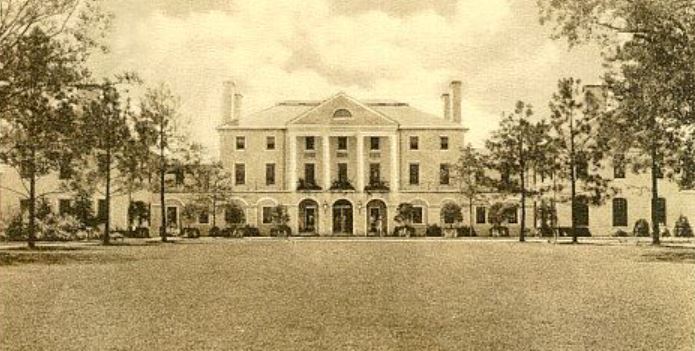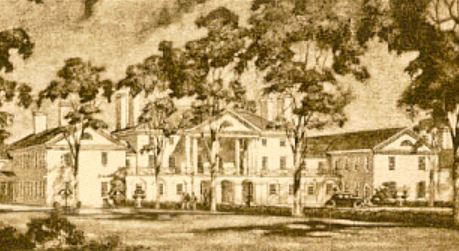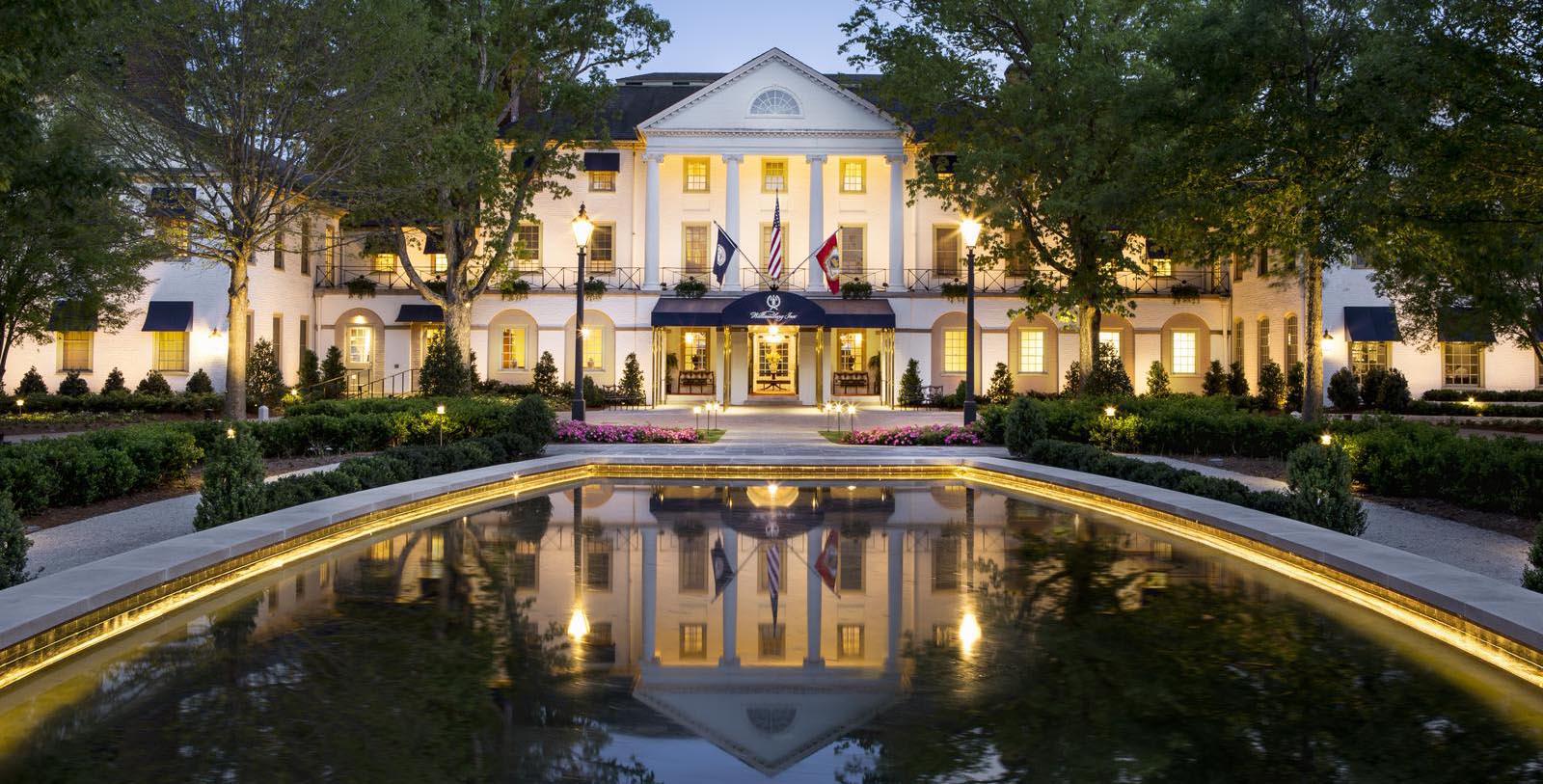Receive for Free - Discover & Explore eNewsletter monthly with advance notice of special offers, packages, and insider savings from 10% - 30% off Best Available Rates at selected hotels.
williamsburg inn history
Discover the Williamsburg Inn, built in 1937 by John D. Rockefeller Jr., which features neoclassical architectural design and the ambience of a comfortable Southern country estate.
Williamsburg Inn, a member of Historic Hotels of America since 1994, dates back to 1937.
VIEW TIMELINECelebrating 75 Years of Hospitality - Williamsburg Inn
Watch this brilliant recap of the Williamsburg Inn’s heritage from its 75th anniversary celebration in 2012.
WATCH NOWListed on the National Register of Historic Places by the U.S. Secretary of the Interior, Williamsburg Inn & its history has long stood as a cherished icon in the heart of Colonial Williamsburg. While the inn today is widely celebrated for its distinguished service, there was a time when it was almost never even built! In the late 1920s, John D. Rockefeller Jr. was deeply involved in the extensive renovations taking place throughout the city. Inspired to help by a local named Reverend Dr. W.A.R. Goodwin, Rockefeller had poured millions of his own personal wealth into saving its historic downtown core. Over time, though, Rockefeller noticed that the work had attracted countless tourists who were eager to connect with the nation’s founding mythos. Realizing that those individuals intended to visit for several days, he began exploring options to provide a place for longer-term stays. The project itself quickly assumed the utmost importance for Rockefeller, as the only available hotel in the area—the Colonial Inn—was fast deteriorating. Nevertheless, Rockefeller resisted plans from his architects to build a convention hotel that would upset Williamsburg’s historical character. Instead, Rockefeller continuously instructed his team to design a beautiful inn that drew inspiration from the town’s original architecture. To that end, the architects eventually designed a glorious Colonial Revival façade that closely copied America’s late 18th-century design aesthetics. Construction on the building began in earnest in 1936, after Rockefeller and his engineers spent the previous nine years cycling through a number of potential build sites. Finally selecting a plot of land on Francis Street, the architects spent several months developing Rockefeller’s brilliant new inn. Rockefeller himself was intimately involved with the plans, often meeting with his design team to give them his ideas.
When the newly christened “Williamsburg Inn” debuted in 1937, it immediately became the most popular vacation destination in the entire region. Guests adored the structure’s historically themed appearance, as well as the many fantastic amenities that awaited inside. State-of-the-art plumbing was available within each one of the inn’s original guestrooms, as was air-conditioning—unheard of then in the hospitality industry. Popularity with the Williamsburg Inn surged, prompting Rockefeller to install additional facilities like a swimming pool and bathhouse. Even some of the most illustrious people of that age arrived to experience its world-class service. In 1943, for instance, General George C. Marshall arranged to host the British Joint Chiefs of Staff at the inn as part of a strategy to strength the alliance between America and Great Britain during World War II. Then, in 1946, future President Dwight D. Eisenhower entertained the former British Prime Minister Winston Churchill inside the building following the latter’s famous “Sinews of Peace” speech in Washington. Perhaps one of the grandest visits to ever take place transpired nearly two decades later, when Queen Elizabeth II and her husband, Prince Philip, the Duke of Edinburgh, stayed at the Williamsburg Inn for Virginia’s 350th anniversary. Touring both Williamsburg and neighboring Jamestown, some 40,000 people had traveled just to catch a glimpse of the royal couple. (The Queen and Prince returned in 2007 to observe the commonwealth’s 400th birthday, too!) Having since been inducted into Historic Hotels of America, the Williamsburg Inn continues to uphold its prestigious reputation for renowned hospitality and unrivaled luxury. Come experience the heritage of Williamsburg in style with a trip to the venerable Williamsburg Inn.
-
About the Location +
Williamsburg itself was first settled as a fortified town called “Middle Plantation” in 1632, following a brief war with the local Powhatan a decade prior. The town specifically governed over a series of palisades that served to protect Jamestown, Virginia’s main administrative center at the time. Nevertheless, Middle Plantation experienced newfound importance amid Bacon’s Rebellion in 1676. That year, Nathaniel Bacon and a large group of disgruntled Virginia colonists openly defied the colonial governor, William Berkeley, due to his policies with the Native Americans. They soon fought their way south toward Jamestown, eventually burning the whole city to the ground. Berkeley and the rest of the colonial government fled to Middle Plantation, where they set up a temporary headquarters for the remainder of the uprising. Once Berkeley had finally put a stop to Bacon’s Rebellion, however, he quickly realized that Middle Plantation provided a much safer—and all around nicer—location. As such, the colonial government permanently relocated to the town, which they renamed “Williamsburg” after the reigning monarch of England, William III.
Williamsburg became the most important settlement in Virginia for the next several decades, emerging as the main cultural center within the entire colony. One of the biggest forces behind this development was the newly created College of William & Mary. Colonists had attempted to create such a facility for years, with the first undertaking happening in the 1620s. After many failed attempts, the colonists tried one more time in Williamsburg during the 1690s. They hired Reverend James Blair to spearhead the effort, who successfully obtained a royal charter in London. Work on the new school began shortly after Blair’s return to Virginia in 1693, christening it as the “College of William & Mary” in honor the king and his wife, Queen Mary II. The college officially opened just a year later, offering classes inside the forerunner to the iconic Wren Building. Soon enough, the College of William & Mary developed an esteemed reputation for the quality of its education, prompting Virginia’s wealthiest families to send their children to study on-site. In fact, many of the nation’s Founding Fathers enrolled at the school, including future U.S. Presidents George Washington, Thomas Jefferson, and James Monroe.
Like Jamestown before it, Williamsburg ultimately lost its status as Virginia’s capital. During the American Revolution, Thomas Jefferson—then serving as Governor of Virginia—decided to move the capital 50 miles inland to Richmond. He feared that Williamsburg’s location near the James and York rivers made it incredibly vulnerable to a British attack. But Williamsburg managed to survive the loss of its political identity, emerging in the wake of the conflict as an important economic hub for Virginia’s Tidewater region. Many entrepreneurs developed a bunch of canals around Williamsburg that allowed farmers to transport their goods to nearby regional markets. A branch of the Chesapeake & Ohio Railroad soon arrived in Williamsburg in the 1830s, further reinforcing its significance as a local transportation center. Its economic success even attracted the attention of the Union military during the American Civil War, with George B. McClellan’s Army of the Potomac capturing the city amid its campaign to take Richmond in 1862.
Save for the college, Williamsburg eventually slid into a period of decline at the start of the 20th century. Thankfully, that stagnation came to an end due to the efforts of Reverend Dr. W.A.R. Goodwin and his allies in the Rockefeller family. The pastor of Williamsburg’s Bruton Parish Church, Goodwin had grown alarmed at the decay that many of the town’s colonial buildings had suffered. At first, Goodwin aspired to restore his historic church (founded in 1674), but he soon expanded his vision to encompass the entire historic downtown. He fortunately found a couple of kindred spirits in John D. Rockefeller Jr., and his wife, Abby Aldrich Rockefeller. The two Rockefellers were themselves committed preservationists and immediately supported Goodwin’s dream of saving Williamsburg’s colonial heritage. Starting in the 1930s, Goodwin and the Rockefellers gradually restored historic Williamsburg back to its former glory. The three also created a 300-acre “Historic Area” that served as an open-air museum called “Colonial Williamsburg,” too. Now a recognized National Historic Landmark, Colonial Williamsburg rates among the most popular cultural heritage tourism destinations in the whole country.
-
About the Architecture +
When John D. Rockefeller intended to construct a magnificent inn in downtown Williamsburg, he intended to create something that blended well with the town’s historic, colonial surroundings. Yet, Rockefeller did not want the structure to mimic the local architectural styles—rather, he yearned to have the building’s appearance merely compliment them. To that end, Rockefeller turned to the collective genius to the Boston-based firm Perry, Shaw & Hepburn. Already hard at work spearheading the larger renovation projects happening around town, Rockefeller had complete confidence in their ability to make his dream into a reality. But Rockefeller’s preferences nonetheless proved to be a significant challenge to overcome, ultimately refusing four different plans. The architects also had to frequently incorporate some of Rockefeller’s actual ideas into their designs, as he often met personally with the team to discuss their ongoing efforts.
What eventually brought the planning to an end was a blueprint that incorporated a series of Colonial Revival-style motifs from America’s Georgian period. The architects specifically looked to the same kind of historically inspired designs of the resorts that dotted the Allegheny Mountains, believing they brilliantly adapted the character of American colonial architecture for a contemporary audience. Rockefeller immediately fell in love with the idea. In his opinion, the late colonial aesthetics complimented the restored historical structures of the neighboring Historic Area—the nucleus of Colonial Williamsburg—while also reflecting its own unique identity. Construction finally began upon a plot of land along Francis Street in 1936 and took several months to complete. When the new building finally debuted a year later, all hailed the structure as an engineering masterpiece. Rockefeller himself adored his new inn, proclaiming it to be among the best retreats in the entire southern United States.
Colonial Revival architecture itself is perhaps the most widely used building form in the entire United States. It reached its zenith at the height of the Gilded Age, where countless Americans turned to the aesthetic to celebrate what they feared was America’s disappearing past. The movement came about in the aftermath of the Centennial International Exhibition of 1876, in which people from across the country traveled to Philadelphia, Pennsylvania, to commemorate the American Revolution. Many of the exhibitors chose to display cultural representations of 18th-century America, encouraging millions of people across the country to preserve the nation’s history. Architects were among those inspired, who looked to revitalize the design principles of colonial English and Dutch homes. This gradually gave way to a larger embrace of Georgian and Federal-style architecture, which focused exclusively on the country’s formative years.
As such, structures built in the style of Colonial Revival architecture featured such components as pilasters, brickwork, and modest, double-hung windows. Symmetrical designs defined Colonial Revival-style façades, anchored by a central, pedimented front door and simplistic portico. Gable roofs typically topped the buildings, although hipped and gambrel forms were used, as well. This building form remained immensely popular for years until largely petering out in the late-20th century. Nevertheless, architects today still rely upon Colonial Revival architecture, using the form to construct all kinds of residential buildings and commercial complexes. Many buildings constructed with Colonial Revival-style architecture are even identified as historical landmarks at the state level, and the U.S. Department of the Interior has even listed a few of them in the U.S. National Register of Historic Places.
-
Famous Historic Events +
Founding of Colonial Williamsburg (1934): While Colonial Williamsburg today is one of the most historical sites in America, its creation during the early 20th century was a monumental endeavor, too. Much of Williamsburg’s historic downtown had lost much of its character by that time, with more contemporary buildings scattered about the existing colonial structures. Even though some in Williamsburg were complacent in the loss of the historical character, one person—Reverend Dr. W.A.R. Goodwin—had become concerned. What first attracted his attention was the dilapidated state of the Burton Parish Church where he had started serving as rector in 1903. Dr. Goodwin subsequently spent the next four years petitioning his congregation to save the ailing structure, which had been in continuous operation since the beginning of the 18th century. The doctor even traveled around the East Coast in search of money to finance the project, ultimately establishing various philanthropic relationships with people like J. Pierpont Morgan. As a result, the church underwent a brilliant refurbishment that concluded just in time for the 300th anniversary of Virginia’s founding.
Dr. Goodwin eventually moved away from Williamsburg to pursue a position at another parish in upstate New York, although he maintained close ties with the city over the following years. Nevertheless, Dr. Goodwin grew increasingly more worried about the other colonial structures in the heart of Williamsburg and began campaigning to restore them during the mid-1920s. It soon became clear to Dr. Goodwin that he needed additional resources to truly complete all the different renovations. Using his prior fundraising experience, the doctor partnered with some of America’s most influential people. But the most important connection that Dr. Goodwin made was with John D. Rockefeller Jr.—the heir to Standard Oil’s empire—and his wife, Abby Aldrich Rockefeller. Noted philanthropists, the Rockefellers had always taken a special interest in historical preservation. As such, John D. Rockefeller found a kindred spirit in Dr. Goodwin and his quest to save Williamsburg’s colonial past.
Together, the three quickly deemed their project as the “Williamsburg Restoration” and set about renovating countless buildings over the next several years. Over time, Dr. Goodwin and the Rockefellers had restored enough structures that they were able to transform a portion of downtown Williamsburg into a 300-acre open-air museum that they referred to as the “Historic Area.” Supervising the renovations was a renowned architectural firm from Boston known as “Perry, Shaw & Hepburn.” Under their guidance, nearly 500 historic buildings were either rebuilt or restored to resemble their original appearances from the late 17th and early 18th centuries. Perhaps the greatest structures in Williamsburg that the firm worked on were the Governor’s Palace and the original Virginia Capitol. Both sites were completely reconstructed on their original sites via a series of historical illustrations and descriptions that had survived into the present.
Word of the renovations spread quickly throughout the United States, inspiring dozens of tourists to head to Williamsburg to see the progress for themselves. John D. Rockefeller Jr. quickly recognized the emerging popularity of the Historic Area, particularly regarding the potential income that the tourists could generate for the park’s continued preservation. As such, he took the idea of the open-air museum a step further by installing a number of restaurants and storefronts within a couple of the renovated structures. He even debuted a brilliant hostelry next to the Historic Area called the “Williamsburg Inn” just a few years after it opened as “Colonial Williamsburg” in 1934. Colonial Williamsburg has since developed into an international holiday destination renowned for the wealth of cultural heritage experiences that educate nearly half a million visitors each year. Not only has Colonial Williamsburg helped reignite a national interest in American history, but it was also responsible for starting the cultural heritage travel industry that now prosperous across the country. This fantastic National Historic Landmark is truly one of the best places in the United States to both reconnect with the past and have an incredibly memorable vacation.
-
Famous Historic Guests +
Shirley Temple, child actress known for her role in Bright Eyes and The Little Princess.
Salvador Dalí, surrealist artist known for paintings like The Persistence of Memory and Metamorphosis of Narcissus.
George C. Marshall, General of the Army and Army Chief of Staff under presidents Franklin D. Roosevelt and Harry S. Truman.
Dudley Pound, Admiral of the Fleet for the British Royal Navy during World War II.
Alan Brooke, Chief of the Imperial General Staff for the British Army during World War II.
Charles Portal, Marshal of the (British) Royal Air Force during World War II.
Winston Churchill, Prime Minister of the United Kingdom (1940 – 1945; 1951 – 1955)
Prince Philip, Duke of Edinburgh and Consort to the British Monarch (1952 – 2021)
Queen Elizabeth II of the United Kingdom (1952 – 2022)
Emperor Hirohito of Japan (1926 – 1989)
Harry S. Truman, 33rd President of the United States (1945 – 1953)
Dwight D. Eisenhower, 34th President of the United States (1953 – 1961), and Supreme Allied Commander Europe during World War II.
Gerald Ford, 38th President of the United States (1974 – 1977)
-
Film, TV and Media Connections +
The Howards of Virginia (1940)
Williamsburg: Story of a Patriot (1957)
George Washington (1984)
George Washington: Forging of a Nation (1986)
John Adams (2008)
Turn: Washington’s Spies (2017)


































